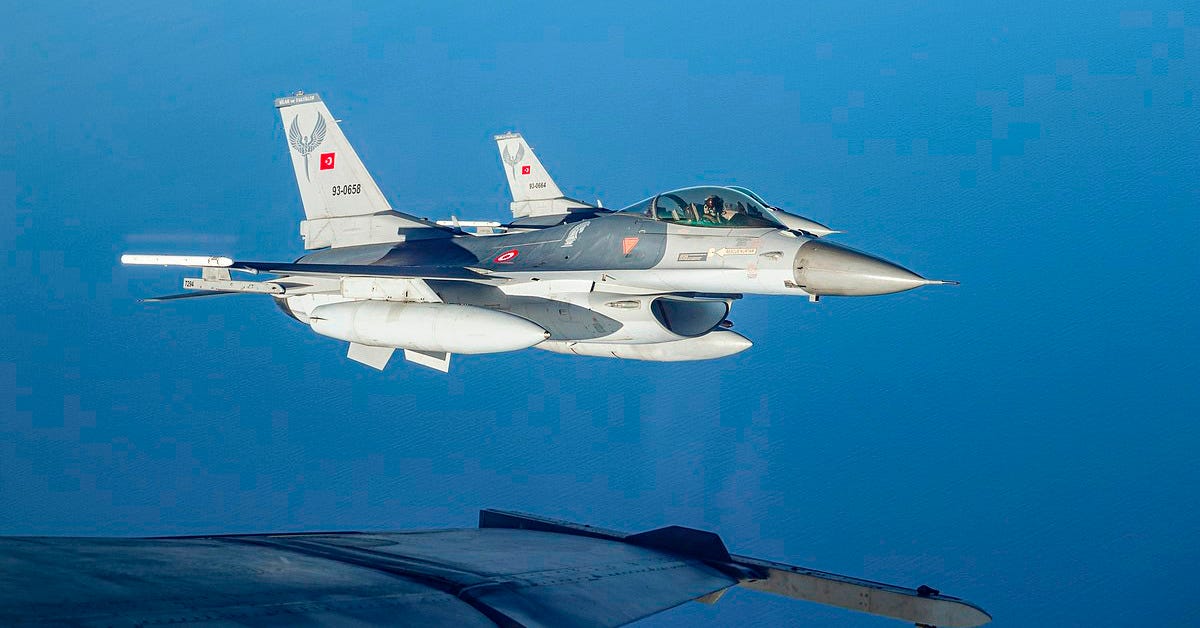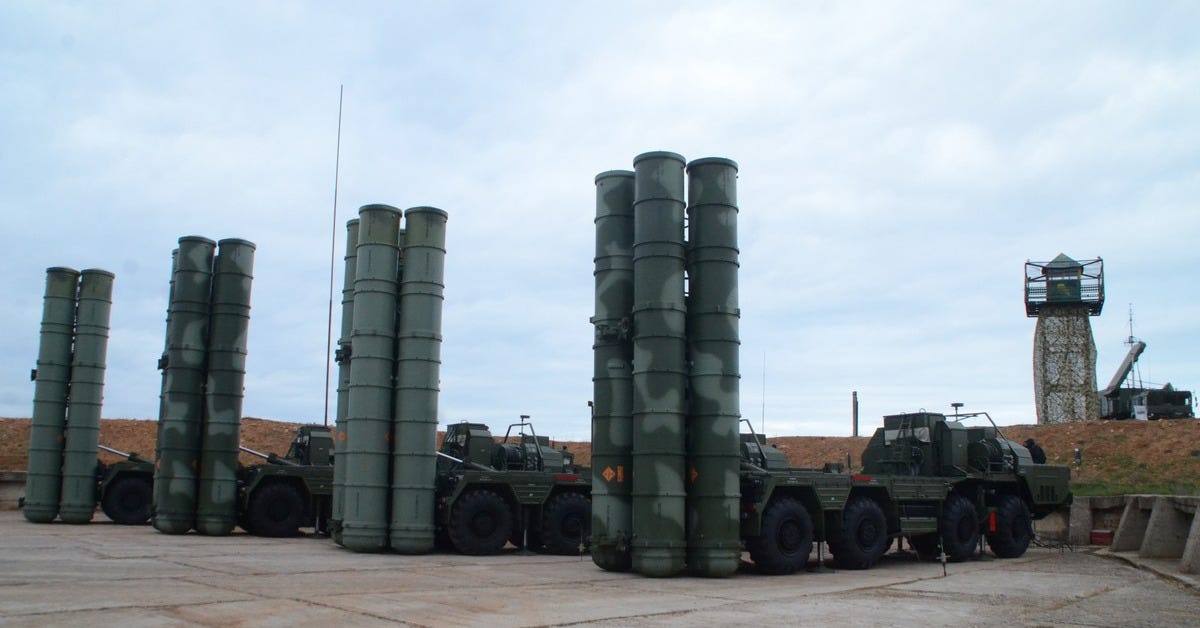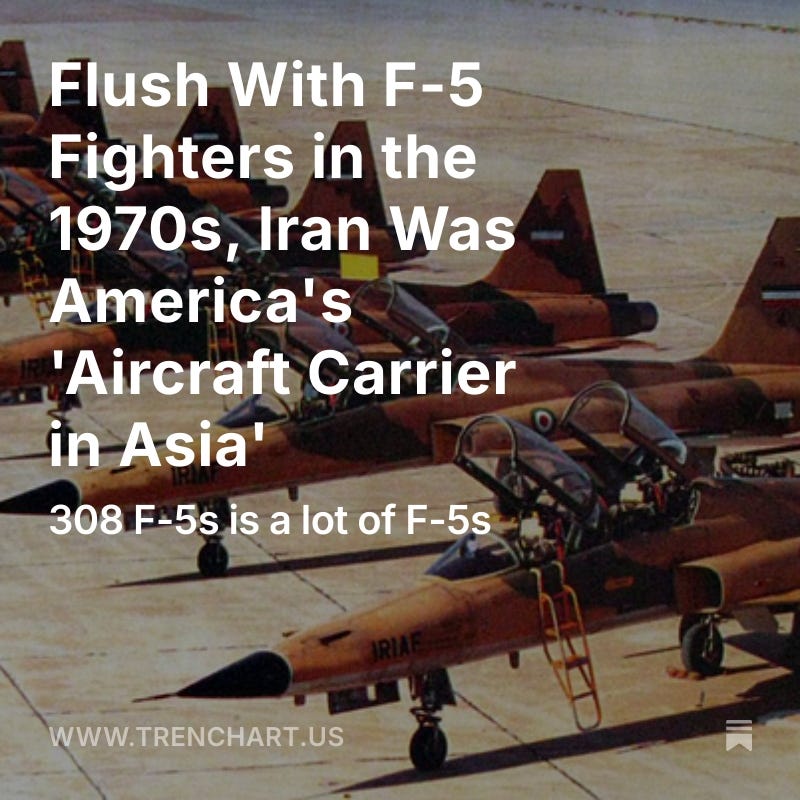The Turkish Military Keeps Trying to Buy Russian—And Keeps Shooting Itself in the Foot
Russian arms deals keep getting Turkey into trouble
Despite playing a vital strategic role in safeguarding NATO’s southern flank since 1952 and possessing the alliance’s second-largest standing army, Turkey has at times turned to the Soviet Union and Russia for weapons.
But Moscow keeps botching the opportunity.
U.S.-Turkey relations hit a low point in 1975. Angered by Turkey’s use of American military hardware in its military intervention in Cyprus the year before, Washington imposed a complete arms embargo on Ankara. Turkey responded by closing dozens of U.S. military bases on Turkish soil, many of them electronic surveillance stations that monitored the Soviet Union.
The embargo dragged on for three years but failed to yield the desired results. It was “meant to coerce Turkey to the negotiating table and re-establish the status quo,” according to one assessment. “Instead, the result was severely strained relations, closure of and restrictions on U.S. facilities in Turkey, a weakened NATO and no progress on the underlying Cyprus issue.”
Early in the embargo, Turkey signaled that the Soviet Union might even serve as an alternative for American-made weapons if Washington imposed it indefinitely. In those years, Ankara even contemplated buying up to 60 helicopters from Moscow. At the same time, it turned down a Soviet offer of Mikoyan MiG-21 and MiG-23 fighters.
“The purchase of military helicopters from Russia could mark a significant turn in Turkish policy, even though the Turks are said by U.S. intelligence to have decided against buying Soviet jets at least for now,” the Associated Press reported in October 1975.
The sight of Turkish MiG-21 and MiG-23s sitting on the tarmac of a Turkish air base like Incirlik in Adana would certainly have raised eyebrows among Turkey’s fellow NATO members and marked a low point for the alliance.
It’s worth recalling that Ankara didn’t immediately signal it might replace its overwhelmingly American-equipped armed forces with Soviet weaponry. It also explored buying weapons from France. Turkish Foreign Minister Ihsan Sabri Caglayangil told a press conference in November 1975 that France could supply Turkey with most of the weapons it needed.
Ultimately, Ankara ordered some SS-11 anti-tank missiles and AS-12 air-to-surface missiles from Paris during that period, but France didn’t come close to replacing America’s role as the primary arms supplier.
“Unless the ban is lifted, NATO leaders believe, the Turks will ease out of the Western camp and, in the years ahead, may begin to purchase Soviet weapons,” investigative journalist Jack Anderson wrote in June 1978.
The high command of NATO, he went on to report, “fears the departure of Turkey would eviscerate the alliance and imperil the security of the West. This is an attitude that the Turks are eager to encourage.”
Others weren’t as worried about that worst-case scenario. A Nov. 24, 1975, CIA analysis explored the possibility of Turkey acquiring Soviet weaponry, observing that “the Turks have stepped up their efforts both to locate alternate foreign sources and to improve their indigenous production capability.”
“Most of this effort has been directed towards closer ties with West Europe and with other Muslim states, but some expression of interest in Soviet equipment is understandable, if only to make the West more amenable to Turkish requests, e.g. during the Defense Cooperation Agreement negotiations with the U.S.,” the report read.
The report also noted that while no “serious negotiations” for arms had taken place at that point, Turkey did signal its interest in potentially acquiring Russian helicopters, but that it was unclear whether they would be for military or civilian use.
Nevertheless, it expressed skepticism that Turkey would seriously contemplate replacing its American equipment with Soviet alternatives.
“Although the USSR obviously has the capability to participate in the major re-equipment of the Turkish forces, Turkey probably would turn to it only as a last resort and would certainly see no value in moving from heavy dependence on the U.S. to heavy dependence on the USSR.”
“The acquisition of some equipment such as helicopters seems possible, however, particularly if the financial terms offered by the Soviets were favorable.”
Useless Russian missiles
Turkey did go on to acquire helicopters from Moscow, but under much different circumstances years later.
Ultimately, Washington lifted its arms embargo in July 1978, and Turkey ultimately didn’t buy any Soviet arms. In 1987, Turkey began acquiring Lockheed Martin F-16s, going on to build the third-largest fleet of the iconic American fighter jet under local licensed production.
Turkey did buy weapons from Russia under very different circumstances following the collapse of the Soviet Union.
In November 1992, the Turkish government agreed to buy $75 million worth of Russian arms, becoming the first NATO country to do so. That month, Turkish Interior Minister Ismet Sezgin signed an agreement with Russian Foreign Economic Relations Minister Peter Aven in Istanbul, stating that the arms package would include 17 Mil Mi-17 utility helicopters.
Between 1993 and 1996, Turkey acquired 19 Mi-17s, 214 BTR-8 armored personnel carriers and 23 BTR-60PB APCs, according to the Stockholm International Peace Research Institute’s arms transfers database. Other sources cite an order for 16 Mi-17s and 239 BTR-80s.
Furthermore, Ankara reached a military-technical and defense-industrial cooperation agreement with Moscow in 1994 and another memorandum of understanding on military cooperation in 1998.
These arms imports weren’t a bid to replace U.S. armaments. On the contrary, Ankara’s acquisition of Russian weaponry coincided with deliveries of M-113 APCs, M-60 main battle tanks, Sikorsky S-70 helicopters, Bell AH-1 attack helicopters and even Knox-class frigates.
Russian equipment merely complemented these larger American arms imports, and did so quite poorly. The Turkish military wasn’t happy with its new Russian toys, deeming them inferior to their Western counterparts. It was also frustrated that Moscow didn’t provide enough spare parts and other support.
Consequently, Turkey didn’t buy any Russian armaments for more than a decade. That changed in 2008, when it ordered 80 9M133 Kornet anti-tank guided missiles in a $70 million deal.
The following decade, Turkey made its most fateful Russian acquisition that has had far-reaching consequences for Ankara to the present day. In 2017, despite repeated warnings from the U.S., Ankara entered an estimated $2.5-billion contract with Moscow for the supply of strategic S-400 air defense missile systems.
Shortly after Russia flew in the first S-400 components in July 2019, the U.S. suspended Turkey from the F-35 Joint Strike Fighter project. Turkey received two S-400 systems and at least 120 48N6 missiles. It had ultimately planned on acquiring 100 Lockheed Martin F-35s for its air force.
U.S. officials maintained that the S-400 could enable Russia to gather sensitive data on the F-35 if the two systems operated in the same environment. Ankara hasn’t put its S-400s into operation, and they remain in storage six years after delivery.
Around the same period, Turkey also explored deepening military ties with Russia. There was talk of jointly producing the S-500 air-defense system—and even of Turkey buying Russian fighter jets such as the Sukhoi Su-35 or even the Sukhoi Su-57, Russia’s troubled stealth fighter.
However, even after the S-400 debacle badly strained relations and military cooperation between Turkey and NATO, buying Russian fighter jets would have been a step too far, as analysts argued at the time.
“It would not only be meaningless but detrimental for NATO to have such an ally,” Kerim Has, a Russian and Turkish affairs analyst, told me in 2019. “It would also mean a 180-degree paradigm shift in Turkey’s historical geopolitical orientation.”
“And not just since 1952 when Turkey joined NATO, but since its two-century Westernization process began.”
Of course, it didn’t come to that. Today, Turkey’s S-400s remain in storage, Ankara never exercised its option to acquire another batch and it is seeking readmission into the F-35 program. There’s the possibility of a contract for new 40 F-16s as well as a deal for 40 Eurofighter Typhoon fighters from the United Kingdom.
It seems highly unlikely Turkey will buy Russian military hardware again any time soon, especially in light of Russia’s 2022 invasion of Ukraine. Turkey may well have concluded Russian weapons are more trouble than they’re worth.





